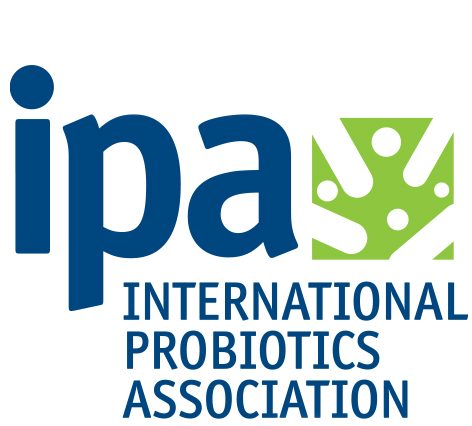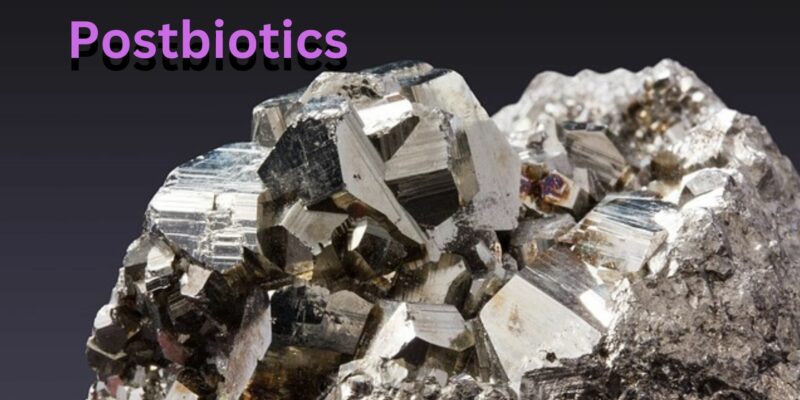Nearly 25% of people worldwide are impacted by iron deficiency, resulting in anemia and the inability to maintain sufficient tissue oxygenation, among other negative consequences. Studies have demonstrated that the gut microbiota significantly impacts iron absorption and metabolism, and vice versa. Further, probiotics, prebiotics, and postbiotics have been explored for their potential role in the management of iron deficiency anemia.
Two previous IPA blogs described the research regarding the potential roles of probiotics and prebiotics respectively in iron deficiency anemia. Here the relevant evidence for postbiotics will be explored.
Iron deficiency anemia, in brief
Anemia is a medical condition that occurs when the body does not have enough healthy red blood cells to transport sufficient oxygen to the tissues. The primary cause of anemia is usually a lack of iron, which can result from inadequate dietary intake, poor absorption, blood loss, or pregnancy. Iron is essential for producing hemoglobin in red blood cells, energy production, immune function, muscle activity, and brain health. It can be obtained through dietary sources, supplements, or blood transfusions and exists in two forms: heme and non-heme, which can convert between Fe2+ and Fe3+.
Gut microbiota and iron
The gut microbiota is crucial in regulating iron levels by decreasing iron-binding compounds, converting Fe3+ to Fe2+, and improving the host’s ability to absorb dietary iron. Alterations in iron levels can impact the gut microbiota composition, leading to dysbiosis and intestinal pathologies. Research indicates that Fe supplements can affect the gut microbiota by reducing beneficial lactic acid bacteria and increasing pathogenic Escherichia coli.
See the IPA blog titled Potential of Probiotics in Iron Deficiency for an expanded view of iron-deficiency anemia, its causes, and the interaction of the gut microbiota in iron bioavailability and metabolism.
Postbiotics, an introduction
A 2021 consensus panel defines postbiotics as “a preparation of inanimate microorganisms and/or their components that confers a health benefit on the host.” The authors added that postbiotics are “inanimate substances derived from microorganisms that are no longer alive or active, such as intact cells or structural fragments, including cell walls.” Microbe-produced substances in postbiotic formulas—such as metabolites, proteins, or peptides—may also be beneficial but are not needed to be a postbiotic.
Note that the ISAPP definition has not been universally accepted. A response from a large group of scientists worldwide disagreed with the ISAPP team on the definition, stability claims, valid markers of efficacy, and use of the word “inanimate.”
The ISAPP panel stood by its arguments for the definition. For a deeper look at the discussion surrounding definitions, see IPA’s 2022 blog titled Seeking Clarity on Postbiotics.
The term “postbiotics” may be a work in progress, but the factors being considered are not new. The scientific literature on postbiotics includes cell-free supernatants, exopolysaccharides, enzymes, cell wall fragments, bacterial lysates, short-chain fatty acids, and gut microbiota-produced metabolites such as vitamins, phenolic-derived metabolites, and aromatic amino acids.
Postbiotics may provide distinct advantages for therapeutic use because, unlike live microorganisms such as probiotics, they are more stable and may be safer. Health benefits may result from different mechanisms, including modulation of microbiota, gut barrier function, immune responses, metabolic responses, and systemic signaling.
Postbiotics in Iron Deficiency Anemia
A few studies have explored a role for postbiotics in iron deficiency anemia.
Folate
Often used interchangeably, folate is the natural form of vitamin B9 in food, while folic acid is a synthetic form. Folate deficiency causes growth failure and anemia. In addition to sources such as diet and supplements, intestinal bacteria can also synthesize folic acid.
The evidence suggests that folic acid produced by intestinal bacteria, particularly certain strains of bifidobacteria and lactobacilli, can have postbiotic benefits by increasing folate serum levels and potentially reducing the prevalence of anemia, specifically iron deficiency anemia.
In one study, supplementation of Lactobacillus acidophilus in yogurt was associated with elevated vitamin B12 and folate serum levels and reduced prevalence of anemia.
Short Chain Fatty Acids (SCFAs)
Produced by gut microbes during fermentation, SCFAs lower intestinal pH. The resulting acidic environment can improve iron solubility and absorption.
SCFAs, such as butyrate, propionate, and acetate, have been recognized as mediators of iron absorption. However, excessive SCFAs such as butyrate may damage intestinal cells and disrupt the intestinal barrier.
Animals
Data on the relationship between SCFAs and anemia in animal studies are contradictory. One recent study observed an increase in the concentration of all SCFAs in mice with iron deficiency anemia; however, an earlier study found a decrease in propionate and butyrate, as well as SCFA-producing bacteria, in iron-deficient rats.
Humans
In a study of infants with iron deficiency anemia, a reduction in the relative abundance of butyrate-producing species was observed. Butyrate has been shown to modify transcription factors involved in the regulation of iron absorption in the duodenum. As discussed above, increased SCFA during iron deficiency anemia may improve iron absorption.
Tryptophan
Tryptophan, an essential amino acid, has three main metabolic pathways in the human gut: direct metabolism by gut bacteria, the kynurenine pathway in host cells, and conversion to serotonin.
A rise in the activity of indoleamine 2, 3-dioxygenase (a heme-containing enzyme), accompanied by heightened degradation of tryptophan, is thought to contribute to the decline in hemoglobin levels and the progression of anemia.
Research shows that low serum tryptophan levels are linked to decreased hemoglobin values while increasing tryptophan by 10% is associated with a 1.59% increase in hemoglobin. Tryptophan is crucial for protein synthesis, cell growth, and erythropoiesis, and its deficiency is observed in anemia.
A summary of studies evaluating postbiotics in anemia is available online.
Takeaway
As the definition evolves, the potential for using postbiotics to benefit health is becoming apparent, especially in situations where live microorganisms may be ill advised. Several postbiotics may reduce the prevalence of iron deficiency anemia through involvement with iron homeostasis.
A role for postbiotics in iron deficiency anemia would be welcomed as the condition severely impacts billions of people, many in developing countries. However, more research is necessary to understand their mechanisms and to develop possible clinical applications.
Key references
Aguilar-Toalá, José Eleazar et al. “Postbiotics – when simplification fails to clarify.” Nature reviews. Gastroenterology & hepatology vol. 18,11 (2021): 825-826. doi:10.1038/s41575-021-00521-6
den Besten, Gijs et al. “The role of short-chain fatty acids in the interplay between diet, gut microbiota, and host energy metabolism.” Journal of lipid research vol. 54,9 (2013): 2325-40. doi:10.1194/jlr.R036012
Dostal, Alexandra et al. “Iron depletion and repletion with ferrous sulfate or electrolytic iron modifies the composition and metabolic activity of the gut microbiota in rats.” The Journal of nutrition vol. 142,2 (2012): 271-7. doi:10.3945/jn.111.148643
McClorry, Shannon et al. “Anemia in infancy is associated with alterations in systemic metabolism and microbial structure and function in a sex-specific manner: an observational study.” The American journal of clinical nutrition vol. 108,6 (2018): 1238-1248. doi:10.1093/ajcn/nqy249
Mohammad, Mahmoud A et al. “Plasma cobalamin and folate and their metabolic markers methylmalonic acid and total homocysteine among Egyptian children before and after nutritional supplementation with the probiotic bacteria Lactobacillus acidophilus in yoghurt matrix.” International journal of food sciences and nutrition vol. 57,7-8 (2006): 470-80. doi:10.1080/09637480600968735
Paganini, Daniela, and Michael B Zimmermann. “The effects of iron fortification and supplementation on the gut microbiome and diarrhea in infants and children: a review.” The American journal of clinical nutrition vol. 106,Suppl 6 (2017): 1688S-1693S. doi:10.3945/ajcn.117.156067
Peng, Luying et al. “Effects of butyrate on intestinal barrier function in a Caco-2 cell monolayer model of intestinal barrier.” Pediatric research vol. 61,1 (2007): 37-41. doi:10.1203/01.pdr.0000250014.92242.f3
Rusu, Ioana Gabriela et al. “Iron Supplementation Influence on the Gut Microbiota and Probiotic Intake Effect in Iron Deficiency-A Literature-Based Review.” Nutrients vol. 12,7 1993. 4 Jul. 2020, doi:10.3390/nu12071993
Salminen, Seppo et al. “The International Scientific Association of Probiotics and Prebiotics (ISAPP) consensus statement on the definition and scope of postbiotics.” Nature reviews. Gastroenterology & hepatology vol. 18,9 (2021): 649-667. doi:10.1038/s41575-021-00440-6
Skrypnik, Katarzyna et al. “The Effect of Multispecies Probiotic Supplementation on Iron Status in Rats.” Biological trace element research vol. 192,2 (2019): 234-243. doi:10.1007/s12011-019-1658-1
Soriano-Lerma, Ana et al. “Gut microbiome-short-chain fatty acids interplay in the context of iron deficiency anaemia.” European journal of nutrition vol. 61,1 (2022): 399-412. doi:10.1007/s00394-021-02645-6
Wenninger, Julian et al. “Associations between tryptophan and iron metabolism observed in individuals with and without iron deficiency.” Scientific reports vol. 9,1 14548. 10 Oct. 2019, doi:10.1038/s41598-019-51215-8
Zakrzewska, Zuzanna et al. “Prebiotics, Probiotics, and Postbiotics in the Prevention and Treatment of Anemia.” Microorganisms vol. 10,7 1330. 30 Jun. 2022, doi:10.3390/microorganisms10071330
Żółkiewicz, Jakub et al. “Postbiotics-A Step Beyond Pre- and Probiotics.” Nutrients vol. 12,8 2189. 23 Jul. 2020, doi:10.3390/nu12082189

